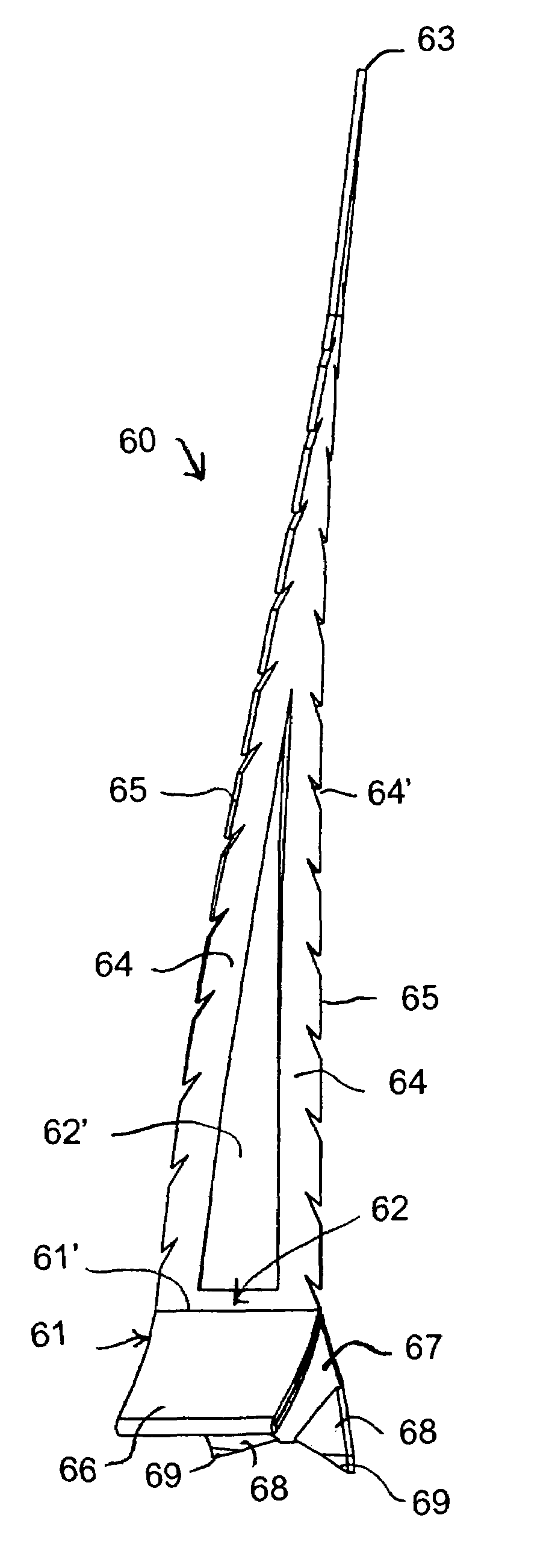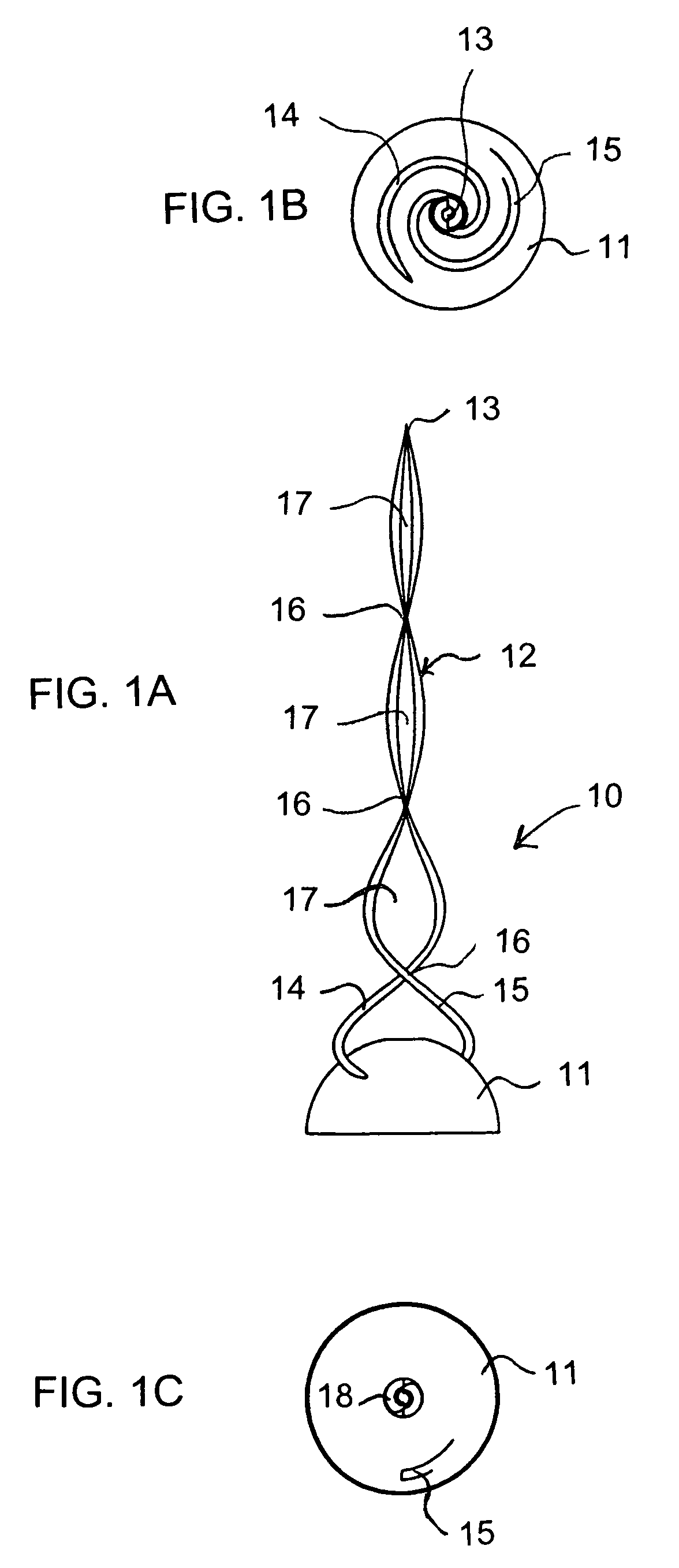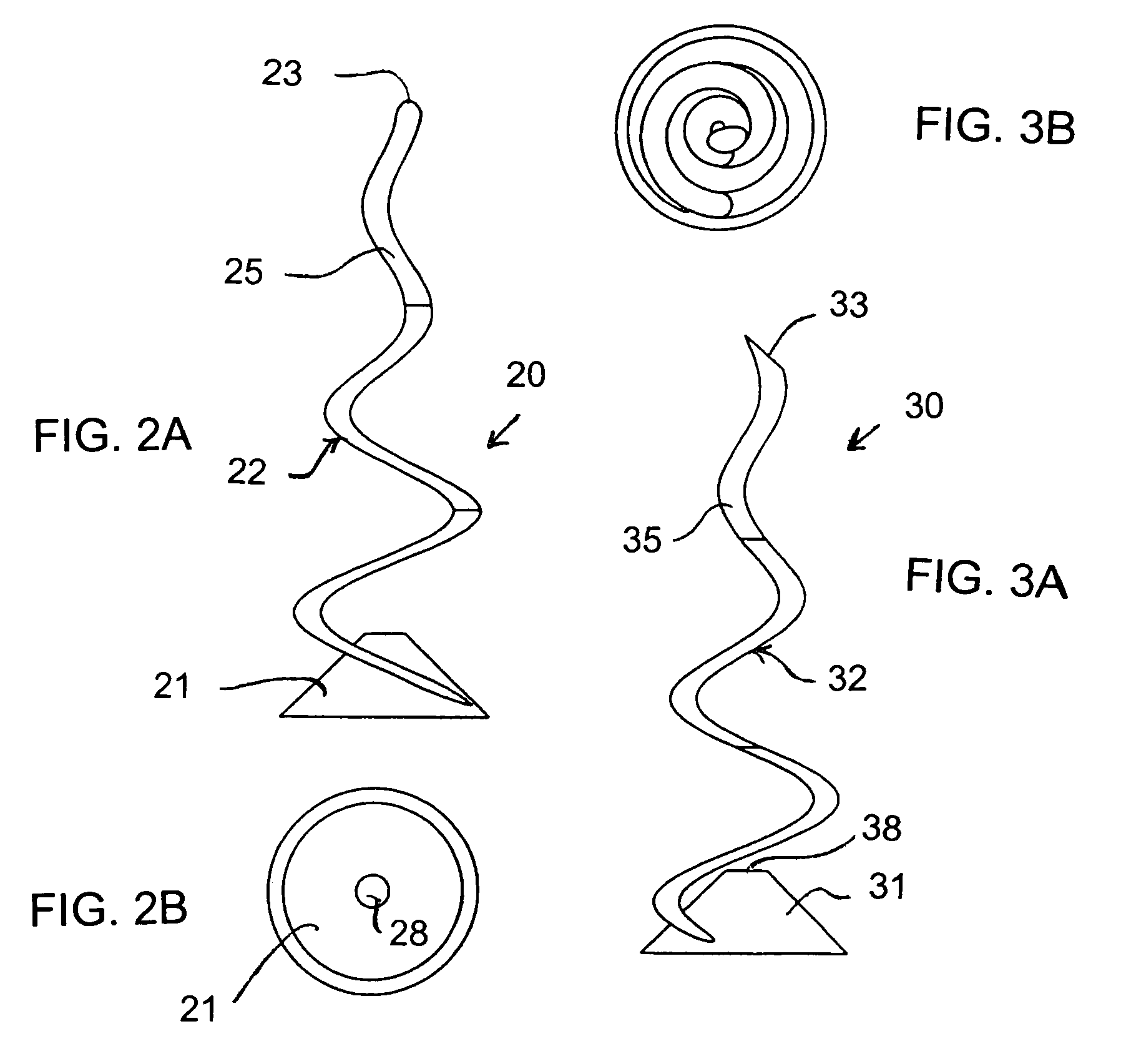Fiber and process for producing three-dimensional, self interlacing composites by mechanical polymerization with ultrasonic manipulation
a technology of mechanical polymerization and composites, applied in the field of fibers, can solve the problems of unwise techniques, difficult layering in irregular or hyper-contoured molds, and failure of short fibers to improve fiber integrity, and achieve the effect of improving strength
- Summary
- Abstract
- Description
- Claims
- Application Information
AI Technical Summary
Benefits of technology
Problems solved by technology
Method used
Image
Examples
Embodiment Construction
[0031]Referring now to the figures of the drawings in detail and first, particularly, to FIG. 1A thereof, there is seen a first embodiment of a fiber or element 10 having a base 11 and a body 12. The body has a trailing end attached to the base and a leading free end. It can be seen from FIGS. 1A and 1B that the body 12 is spirally wound from the base 11 to a tip 13 at the leading free end of the body 12. The spiral shape is created by twisting arms 14, 15 about one another to form connecting nodes 16 and gaps 17 between the nodes in the body 12. The sizes of the gaps 17 increase toward the base 11. One or both of the arms can penetrate the base 11, as is shown by the arm 15 in FIG. 1C. It is also seen from FIG. 1C, which is a view from the bottom of FIG. 1A, that the base 11 is hemispherical or dome-shaped with a hole 18 formed therein and that the bottom thereof is concave. The surface of the base 11 to be impacted by a fluid wave is therefore a concave surface.
[0032]Therefore, th...
PUM
| Property | Measurement | Unit |
|---|---|---|
| lengths | aaaaa | aaaaa |
| length | aaaaa | aaaaa |
| density | aaaaa | aaaaa |
Abstract
Description
Claims
Application Information
 Login to View More
Login to View More - R&D
- Intellectual Property
- Life Sciences
- Materials
- Tech Scout
- Unparalleled Data Quality
- Higher Quality Content
- 60% Fewer Hallucinations
Browse by: Latest US Patents, China's latest patents, Technical Efficacy Thesaurus, Application Domain, Technology Topic, Popular Technical Reports.
© 2025 PatSnap. All rights reserved.Legal|Privacy policy|Modern Slavery Act Transparency Statement|Sitemap|About US| Contact US: help@patsnap.com



